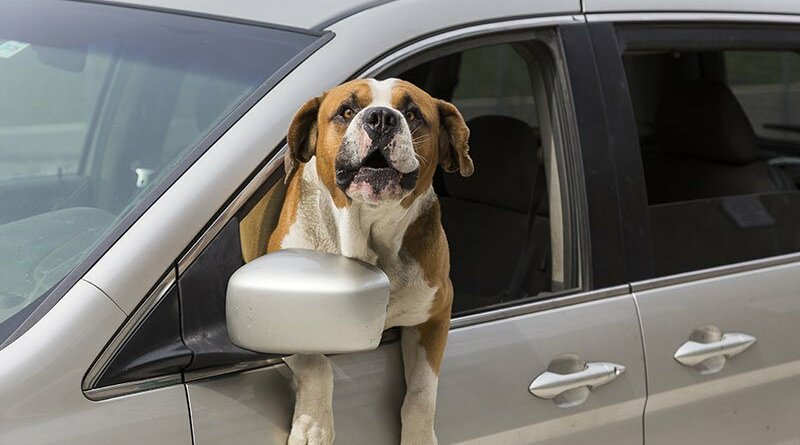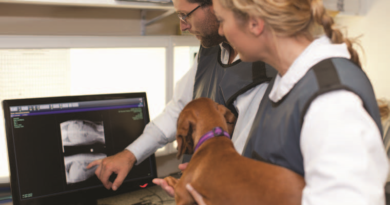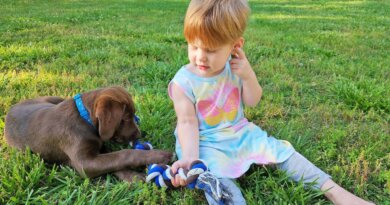Why Do Dogs Bark in the Car?
Dogs are not only our emotional co-pilots, they’re often our actual co-pilots as well, going along for the ride as we run errands or head out for longer excursions. But if they erupt in frenzied barking in response to everything they see on the other side of the car window, their trips are likely to be few and far between. Here’s how to change that behavior.
Many dogs bark at things they see through the car window. Most commonly, this means people and other dogs, but also sometimes cars, trucks, motorcycles, kids on bikes, cats, skateboarders and scooters. Some dogs carry on in a similar way when they see these same things in a different context—perhaps from home or while out on walks—but others only react like this when they’re in the car. And dogs who react in multiple contexts often carry on especially vigorously when in a car.
There’s something about the confined space of a vehicle that tends to make this behavior more likely, and more intense. Perhaps the dog feels trapped and is thus more reactive. Or, alternatively, she may feel more secure, and that confidence makes her more reactive. Though the details are not the same for all dogs, it’s certainly common for dogs to struggle to remain calm at the sight of various triggers on the other side of the car window.
The first step toward improving this behavior is to figure out the specific triggers that cause it to happen. Is it all people, or just big men? Is it all dogs, or only small white ones, or only those who are barking? Does every motorcycle cause the dog to go nuts, or is it only those that pass the car? Is it every vehicle, or only trucks?
Once you’ve that figured out, determine what your dog loves that can feasibly and safely be delivered to her while in the car. (If her favorite thing is Grandpa or breaking into a run, that’s wonderful to know, but not helpful in the car.) Is a new toy the top option, or is something to chew or a stuffed Kong best? If she likes treats, which treats make her the happiest: chicken, steak or a specific training treat?
GET THE BARK NEWSLETTER IN YOUR INBOX!
Sign up and get the answers to your questions.
Once you’ve determined what sets her off and what she loves, the next step is to repeatedly pair them up so that every time she’s exposed to a trigger, she gets that thing, along with lots of praise. Praise is very important, particularly since it can be given even when you’re driving by yourself. When a trigger is present, give your dog lots of happy talk and then, as soon as you safely can—at a stoplight perhaps, or by pulling over—provide the treat. (Try practicing this when you have two people in the car so she learns that praise means treats are coming soon.)
Success requires considerable attention to the many details involved in this type of pairing. The important details include presenting the trigger in a low-intensity way so the dog doesn’t react, safely delivering the treat and praise as soon as possible (immediately is ideal) following exposure to the trigger, and gradually increasing the intensity of the trigger over many training sessions.
To begin, conduct training sessions when the car is parked. That makes the whole situation less intense for most dogs, presumably because the environment is stable rather than constantly changing as the world whizzes by. Sit in the car with your dog, give her a treat and speak to her in an upbeat tone of voice every time her trigger appears. For example, if her issue is that she barks at people, toss her some great treats and praise her every time a person comes into view. (The same process applies to other triggers as well, but for the purpose of this discussion, I will continue to use people as the example.)
Ideally, you can toss the treats and talk in a happy way before she has the chance to react, but if that’s not possible, give her the treats (and the happy talk) even if she does bark. Receiving the treats is not contingent on her behavior. She does not have to sit, lie down, look at you or be a “good girl” in any other way to receive the treats. That’s because you’re not training her to perform a behavior. Rather, you’re teaching her to associate the appearance of people with treats and positive speech, which has nothing to do with her behavior. Once she learns to feel happy about the sight of people, she won’t bark at them.
Practically speaking, one way to improve your timing at delivering treats before she starts to bark is to orchestrate the situation. That can be done by having a friend or two walk by your parked car at a distance, or by parking your car at a significant distance from where people are likely to be walking—say, at the far end of a shopping-center parking lot. The goal is to keep your dog under threshold (in a state where she is not reacting) and to deliver the treats and happy talk the instant a person is visible. Timing is important because the more closely you’re able to link the sight of the person and the delivery of the treats and praise, the easier it will be for your dog to make the connection between the two.
As your dog begins to make this association, you may notice that when she sees a person, she’ll look at you expectantly, perhaps in anticipation of treats. Once she seems relaxed and happy about seeing people, and especially if she seems to expect treats, the next step in your training is to increase the intensity of the trigger, perhaps by reducing the distance, or by choosing a person who is more of a challenge because she’s taller or moves more quickly. Continue to work on teaching her to like seeing people go by at increasingly close range until she can handle people quite close to the car.
The next step in building the association between people and positive items is to teach her that it applies when the car is moving. The safest way to do that is with two people in the car, one to drive, one to offer her goodies. It’s best to do this for a short time—perhaps just a few minutes—and by driving in an area that’s unlikely to present her with a lot of triggers. If you go on longer drives because you have to go somewhere else and try to combine that with dog training, it’s all too likely to push your dog’s limits, and your efforts will be less effective.
In addition to training your dog to be able to handle her triggers without barking, there are other strategies for dealing with barking from the car window that involve prevention and management. For example, one useful option is to teach her to lie down in the car, then offer her a stuffed Kong or other item to keep her occupied. This technique will be most effective if you practice it when the car is parked in your driveway and in other peaceful places. It’s easiest for her to successfully develop this habit when the car is stationary and there’s nothing to set her off. Once she’s able to settle down in a parked car, she’s more likely to be able to do so in a moving one.
Another management technique is to prevent your dog from being able to see out the car windows. If she’s comfortable in a crate, use one in the car and cover it with a blanket. A ThunderCap can also help. This tool obscures your dog’s vision without blocking it entirely, allowing her to make out shapes and navigate as needed. (Teach her to be comfortable wearing it before using it on her in the car.) ThunderCaps have a calming effect on many dogs in a variety of situations, including barking while riding.
Like any behavior change, teaching dogs not to bark from the car window is a gradual process, one that requires many steps and a lot of practice and patience. Remembering that dogs tend to be happier when they can handle the sight of a person (or other trigger) from the car without reacting will help you stay motivated. Their ability to remain calm also means they’ll probably be going places in the car more often—a win/win no matter how you look at it.





Paxlovid over the counter https://paxlovid.pro/# – paxlovid india
how to get on dark web how to get on dark web
disulfiram 500